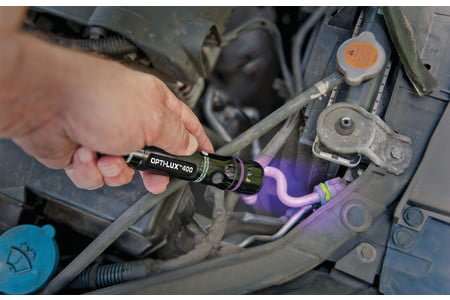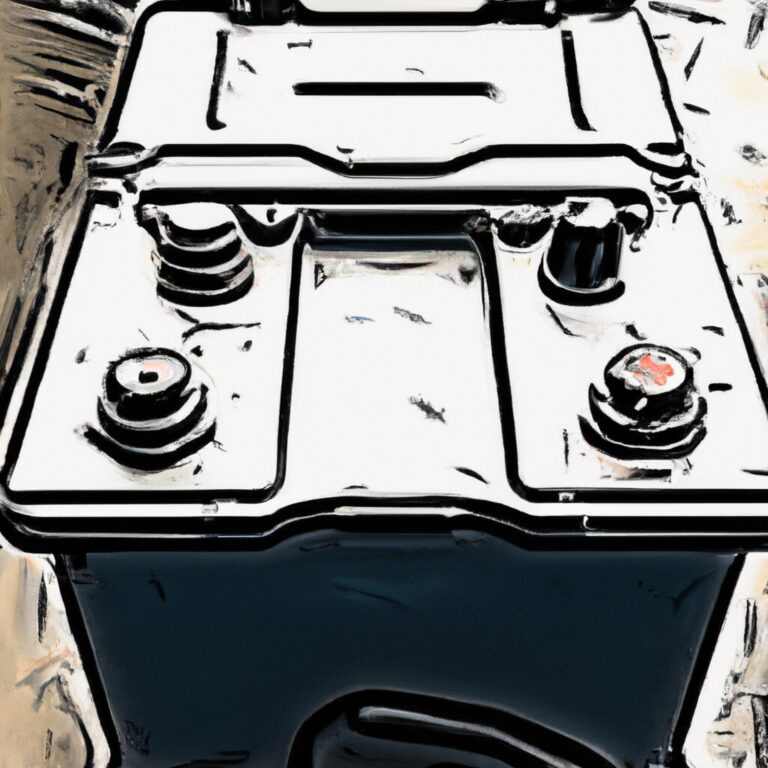How to Find an Ac Leak in a Car
To find an AC leak in a car, add UV dye to the system and use a UV light to locate the leak easily. Detecting AC leaks in a car is crucial for maintaining a properly functioning air conditioning system.
A leak can lead to a decrease in cooling efficiency and potentially costly repairs if left unaddressed. Learning how to identify and address AC leaks in a timely manner can save car owners time and money in the long run.
By following a simple process, you can quickly pinpoint the source of the leak and take the necessary steps to remedy the issue. Let’s explore the steps involved in finding an AC leak in a car and the importance of addressing it promptly.
Signs Of A Car Ac Leak
Sure, I can help you with that. Here’s the content in HTML format: “`html IntroductionSigns of a Car AC Leak:
Weak or Warm AirflowWeak Or Warm Airflow
Check for weak or warm airflow, which can indicate a potential AC leak. If the air coming out of the vents is not as cool as it should be, it’s a sign that the AC system may be leaking refrigerant.
Foul OdorsFoul Odors
Be aware of any foul odors coming from the vents when the AC is running. Strange or unpleasant smells may indicate a leak in the AC system, possibly due to mold or mildew growth as a result of the leak.
Strange NoisesStrange Noises
Listen for any unusual noises, such as hissing or gurgling sounds, when the AC is in operation. These noises can be indicative of a refrigerant leak or a malfunctioning AC system.
Visible Refrigerant LeakVisible Refrigerant Leak
Look for any visible signs of a refrigerant leak under the car, such as puddles or stains on the ground. A visible refrigerant leak is a clear indication of an AC system problem that needs attention.
Frequent AC System CyclingFrequent Ac System Cycling
Notice if the AC system is cycling on and off more frequently than usual. This could be a symptom of an AC leak, causing the system to work harder to maintain the desired temperature inside the car.

Credit: knowhow.napaonline.com
Tools And Equipment Needed
When locating an AC leak in your car, having the right tools and equipment is crucial. Below are the essentials:
Uv Leak Detection Kit
A UV leak detection kit helps you spot leaks using fluorescent dye under ultraviolet light.
Pressure Gauge
A pressure gauge allows you to check the pressure levels in your car’s AC system accurately.
Leak Detection Fluid
Leak detection fluid is a dye that can help pinpoint leaks in the AC system by exposing them under UV light.
Safety Gloves And Eyewear
Don’t forget to wear safety gloves and eyewear to protect yourself from any harmful chemicals and ensure safe inspection.
Steps To Find An Ac Leak
- Inspect the AC system for any signs of oil or refrigerant leakage.
- Look underneath the car for puddles of fluid that may indicate a leak.
- Obtain a UV leak detection kit from an auto parts store.
- Inject the UV dye into the AC system and run the AC to circulate the dye.
- Attach a pressure gauge to the low-pressure port of the AC system.
- Check the pressure readings to identify any significant drops indicating a leak.
- Visually inspect all AC components, including hoses, fittings, and connections.
- Look for any signs of wear, corrosion, or damage that may be causing the leak.
- Run the AC system and feel for any temperature variations that could signal a leak.
- Monitor the performance of the AC system to determine the location of the leak.

Credit: gobdp.com
Repairing The Ac Leak
To troubleshoot an AC leak in your car, start by inspecting the condenser for any signs of oil or refrigerant residue. Next, check for any visible cracks or punctures in the AC hoses. Lastly, use an electronic leak detector to locate the exact source of the leak.
Repairing the AC Leak Identify the Source of the Leak First things first, you need to identify the source of the AC leak in your car. Start with visually inspecting the AC system for any noticeable leaks or traces of refrigerant. Check for oily residue on the AC components or hoses as it can indicate a leak. Additionally, you can use a UV dye kit to help pinpoint the location of the leak under UV light. By identifying the source of the leak, you can effectively move onto the next steps of repairing the AC system. Replace Faulty Components In many cases, the AC system leaks due to faulty components such as O-rings, seals, or hoses. Once you identify the faulty component, you will need to replace it with a new one. Ensure that you are using high-quality replacement parts that are compatible with your car’s AC system. By replacing the faulty components, you can prevent further leaks and ensure the proper functioning of your AC system. Repairing Small Leaks If the leak is small and manageable, you may be able to repair it yourself using repair kits available in the market. These kits typically contain sealants and O-rings to help seal small leaks, effectively preventing further loss of refrigerant. Be sure to follow the instructions provided with the kit carefully to ensure proper application. However, it’s important to note that these kits may not be suitable for all types of leaks, and seeking professional advice is recommended. Seek Professional Assistance In some cases, repairing the AC leak may require expertise and professional assistance. If you are unable to identify or repair the leak on your own, it’s best to seek the help of a certified automotive technician. They have the necessary tools and knowledge to accurately diagnose and repair the AC leak, ensuring that your car’s AC system is restored to optimal condition. By following these steps and ensuring the proper repair of the AC leak in your car, you can enjoy cool and comfortable rides without any hassle.Preventing Future Ac Leaks
Preventing future AC leaks is essential to maintain the performance and longevity of your car’s air conditioning system. Regular maintenance, cleaning condenser coils, keeping windows and doors closed, and avoiding overusing the AC are some key practices that can help you avoid AC leaks in the future.
Regular Ac Maintenance
Scheduling regular AC maintenance checks with a professional is crucial in preventing future AC leaks. During these maintenance checks, the technician will inspect the system for any potential issues, replace worn-out parts, and ensure that everything is functioning optimally. Regular maintenance helps detect problems early on, avoiding major breakdowns and leaks down the line.
Clean Condenser Coils
Keeping the condenser coils clean is another way to prevent AC leaks. Over time, dirt, debris, and dust can accumulate on the condenser coils, inhibiting their ability to remove heat efficiently. This can lead to increased strain on the AC system, potentially causing leaks. Regularly cleaning the condenser coils can improve the system’s efficiency and prevent leaks from occurring.
Keep Windows And Doors Closed
Keeping the windows and doors closed while running the AC helps maintain the cooling effect inside the car. When windows and doors are open, the cool air generated by the AC escapes, causing the system to work harder to maintain the desired temperature. This increased strain can lead to leaks. Keeping windows and doors closed while the AC is on not only prevents leaks but also enhances energy efficiency.
Avoid Overusing The Ac
Overusing the AC can put unnecessary strain on the system, increasing the likelihood of leaks. To prevent this, avoid running the AC for extended periods when it’s not necessary. When the weather is mild, consider using the car’s ventilation system or opening the windows instead. By using the AC judiciously, you can reduce the chances of leaks and extend the lifespan of your air conditioning system.

Credit: m.youtube.com
Frequently Asked Questions For How To Find An Ac Leak In A Car
What Is The Best Way To Find A Leak In An Ac System?
The best way to find a leak in an AC system is to conduct a visual inspection for any visible oil stains or refrigerant leaks. You can also use a special dye, UV light, or electronic leak detector to pinpoint the location of the leak.
Regular maintenance can help prevent leaks.
Where Do Most Car Ac Leaks Occur?
Most car AC leaks occur in the hoses, seals, or O-rings due to wear and tear. Regular maintenance can prevent leaks.
How Do You Know If Your Car Ac Is Leaking?
Check for signs like weak airflow, lukewarm air, strange odors, or hissing sounds. Look for moisture or oil stains near AC components.
Can A Car Lose Freon Without A Leak?
Yes, a car can lose freon without a leak due to evaporation from the air conditioning system.
What Are The Common Signs Of An Ac Leak In A Car?
– The air conditioner blowing warm air. – Foul odor coming from the vents. – Puddles of water or refrigerant under the car. – Hissing sound when the AC is turned on. – Reduced cooling efficiency of the AC system.
How Can I Detect An Ac Leak In My Car?
– Use an electronic leak detector or UV dye to locate the source of the leak. – Inspect the AC system for any visible signs of leaks, such as oil stains or wet spots. – Have a professional perform a pressure test to pinpoint the exact location of the leak.
Can I Fix An Ac Leak In My Car By Myself?
– It is possible to fix minor AC leaks yourself using a DIY AC sealant. – However, it is recommended to have a professional technician repair major leaks for optimal results.
Conclusion
Identifying and fixing an AC leak in your car is critical for maintaining a comfortable and safe driving experience. By following the steps outlined above, you can effectively locate the source of the leak and take appropriate action to repair it.
Remember, regular maintenance is key to a well-functioning AC system.


